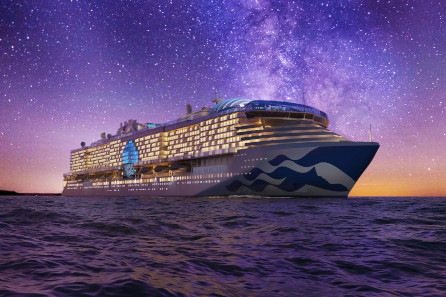5 Top Hawaiian Staple Foods & Ingredients
Sunbathing beside the sapphire waters that surround Hawaii is one of the many pleasures you can indulge in while you're on a Hawaiian cruise. But to get the full experience, it's helpful to learn about Hawaiian staple foods and their origins. Hawaiian food has a way of transporting you into the world of paradise.
While the presence of classic American flavors in Hawaiian food is undeniable, the influences of Japanese, Chinese, Korean, Polynesian, Filipino, and Portuguese foods also play major roles in the distinctive cuisine we identify as Hawaiian food. Take a closer look at some of the flavors and influences that make up Hawaiian food staples to whet your appetite before your next cruise to Hawaii.
Polynesian Ingredients
When Polynesian voyagers originally settled the Hawaiian Islands, they are believed to have brought such ingredients as taro, bananas, coconuts, and yams. These crops were propagated by native Hawaiians and became Hawaiian food staples.
Coconut: Coconut is used in a wide range of Hawaiian dishes, from pani popo (coconut rolls) to haupia (coconut pudding). Haupia was originally made by boiling coconut milk and arrowroot starch until it formed a pudding-like substance; modern recipes tend to use cornstarch. This pudding is popular treat all over the islands — alternatively, you can always find chilled coconut on the side of the road.
Taro: Taro, grown in very wet conditions, is a slightly sweet tuber crop that is steamed and then mashed in to a sticky dish called poi. Poi has been a Hawaiian staple for over 1,000 years and can be found in restaurants all over the island. It is served in sizes such as "one-finger," "two-finger," or "three-finger" — each alluding to how many fingers the serving would require to be scooped up and eaten.
European and American Ingredients
Europeans and Americans have transformed Hawaiian food significantly over the past two hundred years, most notably through the introductions of such ingredients as Spam and pineapple.
Spam: Hawaii is one of the largest consumers of Spam nationwide. This salty canned meat has been a popular ingredient in Hawaiian food for decades and is featured in popular dishes like Spam musubi (think Spam sushi, where the meat is served atop rice and wrapped in nori).
Pineapple: What would Hawaiian cuisine be without pineapple? Practically the embodiment of tropical fruit, pineapple was only propagated on the islands after 1813, but it has become a prominent ingredient in many Hawaiian (and Hawaii-inspired) dishes like pineapple upside-down cake or Hawaiian pineapple chicken.
Chinese Ingredients
Chinese immigrants who worked on some of the Hawaiian Islands' plantations introduced the popular stir-fry cooking technique, sweet-and-sour sauce, and other flavors and dishes. One of the most significant contributions the Chinese made to the Hawaiian flavor scape, however, is li hing mui.
Li Hing Mui: Used mostly on the islands in its powder form, li hing mui is a salty dried plum that's often described as tart and tangy. It is an acquired taste, but locals love to put it on a variety of treats, ranging from sour gummy candies and shave ice to popcorn.
Hawaiian food offers a gastronomic array that's unlike anywhere else in the world. Make sure you sample the islands' most beloved ingredients on your next cruise to Hawaii. View Hawaii cruises.



